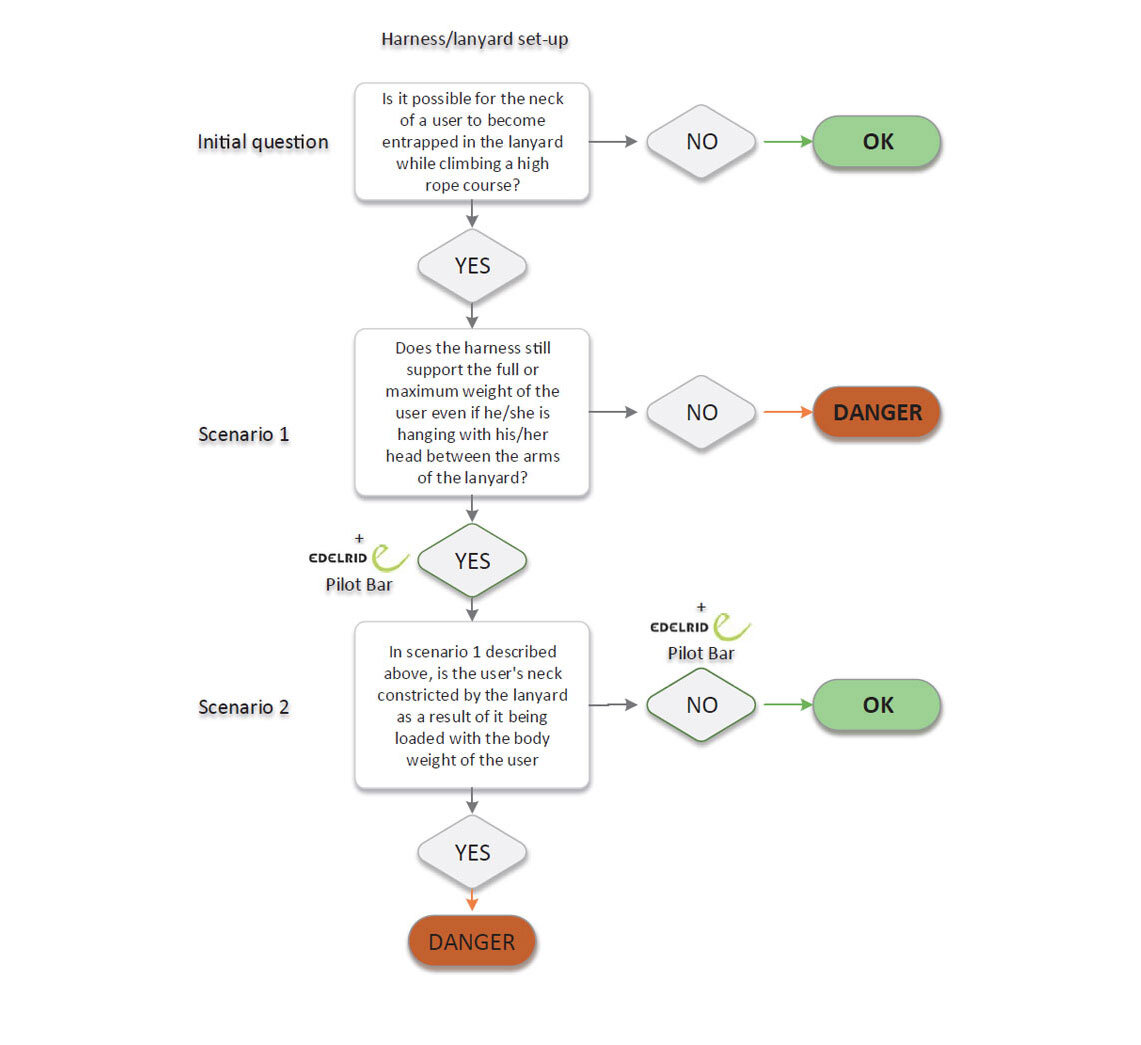Scenario 2:
The harness/lanyard configuration chosen by the park builder/operator does not prevent that in the event of a fall the head of the user could become entrapped between the two arms of the lanyard. Hence possibly resulting in strangulation through prolonged pressure on the major arteries of the neck (carotid arteries) caused by the user's own body weight. This is especially so if the user has no real way of reducing the load of his/her own load. This potential hazard exists and has to be assumed as a given if the park builder/operator of the course cannot entirely and conclusively excluded, even with a only remote possibility of this scenario occurring, however unlikely it might seem.
EDELRID's proposal for a solution to scenario 2:This risk could be diminished by using an asymmetrical lanyard. However, in our opinion, the risk is only effectively minimized if the difference in the length of the arms of the asymmetrical lanyard is at least 20cm (8 inches). Changing to asymmetrical lanyards would mean that many operators would be forced to make major adjustments to their systems, and in particular to their life lines. It would also impose limitations on the ergonomic and practical features of the lanyard with arms of uneven lengths. For this reason EDELRID recommends also using the Pilot Bar in this scenario. In combination with the Smart Belay system the risk of strangulation becomes negligible.
Even when supporting a person's full weight (max. 120kg/265lbs), the Pilot Bar holds the lanyard arms at least 20cm (8") apart.
For purposes of clarity and to reduce complexity, EDELRID has created a quick check flow chart to help you, as a park builder/operator, to assess any potential risks. Please note that EDELRID has no direct influence on the design and construction of the course and therefore recommends a thorough re-assessment in close cooperation with the park builder, operator and PPE manufacturer.
Quick check of the strangulation risk involved in using lanyards on high rope courses and in adventure parks
DANGER means that the death of a user can occur resulting from him/her being strangled by the lanyard if the appropriate counter measures are not in place.


